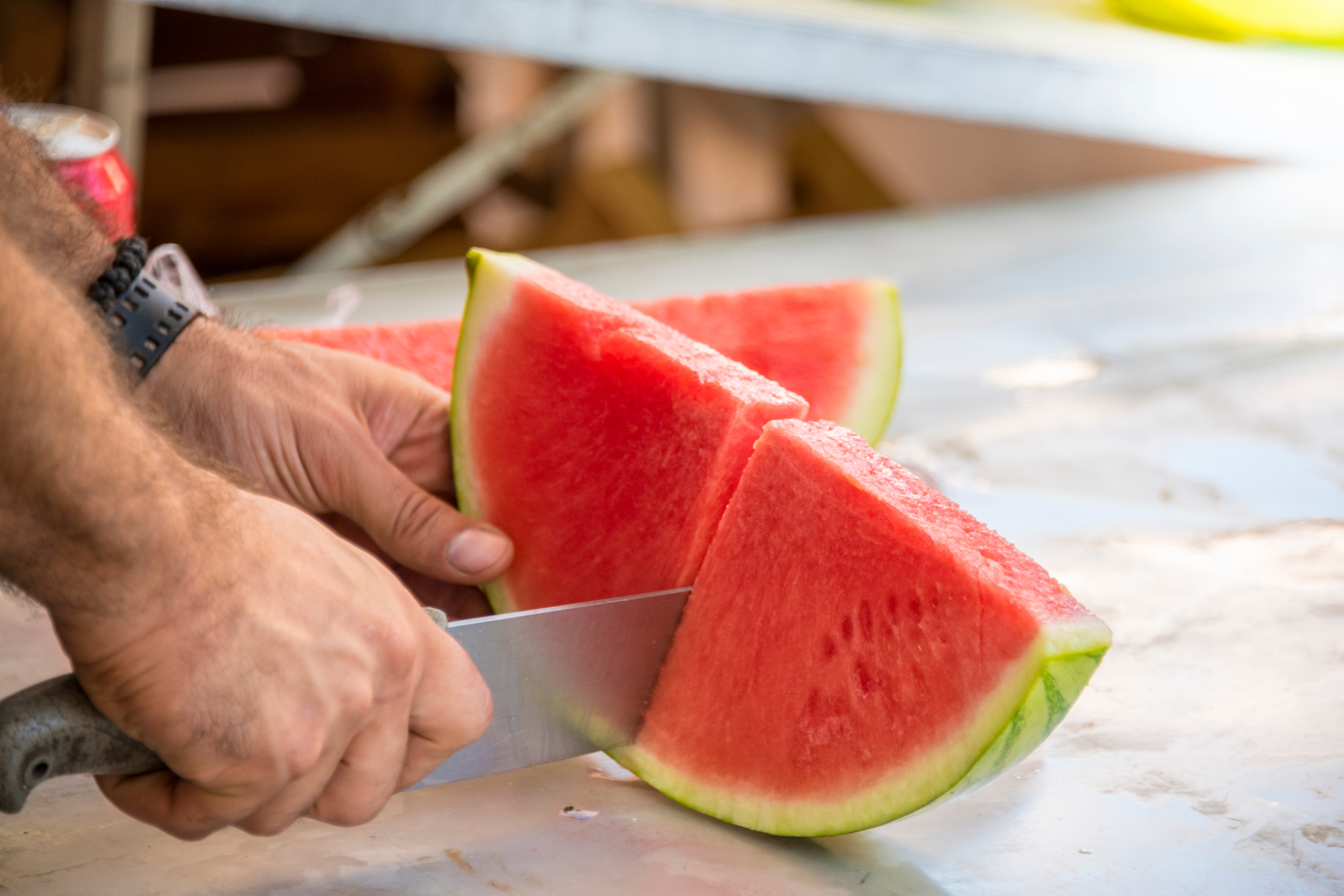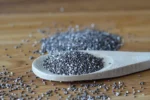I love watermelon, it’s one of those fruits that captures the essence of summer in every bite. But what frustrates me is how quickly it can go from perfectly crisp and sweet to mushy or flavorless if it’s not stored right. And because watermelon is so water-dense, it doesn’t take much mishandling to ruin it. That’s why proper storage is key, especially once it’s been cut.
Over the years, I’ve tested just about every method out there: wrapping in plastic, vacuum sealing, stacking slices in containers, even freezing. Through trial, error, and a lot of watermelon, I’ve figured out what works, what’s a waste of time, and what helps keep that just-cut freshness for as long as possible. Here’s what I’ve learned about how to store cut watermelon so it actually stays fresh.
How To Choose A Ripe Watermelon
Proper storage starts before you even slice into the fruit. If the watermelon isn’t ripe or is already on its way out, no storage method will save it. When I’m picking out a watermelon, I always look for a creamy yellow ground spot, the area where it sat in the field and ripened. A deep yellow color means the fruit had time to mature, while a white or barely-there spot usually means it was picked too early.
Weight is another big clue. I pick up several and choose the heaviest one for its size, which tells me it’s loaded with juice. Then I give it a knock with my knuckles. A ripe one will have a deep, hollow sound, almost like tapping a drum. A dull thud usually means the flesh is mealy or overripe. And if I see dark webbing or sugar spots on the skin? That’s a bonus, it often means the fruit is sweet and full of flavor.
Why all this matters is simple: a ripe, healthy watermelon not only tastes better, but it holds its texture longer once cut. Under-ripe ones go bland fast. Overripe ones start to break down into mush. Starting with the best melon possible gives you a better shot at storing it successfully for more than a day or two.
How To Store A Whole Watermelon
Before I cut into a watermelon, I keep it at room temperature if I plan to eat it within a few days. Whole watermelons do just fine on the counter, in fact, they can last up to a week or more if kept in a cool, dry spot. But if it’s sweltering hot or I want it to last longer, I move it to the fridge. That can stretch its life by another week easily.
Refrigerating a whole watermelon before cutting doesn’t just prolong freshness, it also chills the flesh so it’s extra refreshing when you slice into it. But there’s a tradeoff. Cold storage can slightly dull the flavor over time. That’s why I wait until a day or two before cutting to put it in the fridge. I want to keep the flavor intact as long as I can.
One thing I always do before cutting into a refrigerated melon is let it sit at room temperature for 15 to 30 minutes. That helps bring the flavor back to life a bit and makes it easier to cut. A freezing-cold watermelon can feel harder and less juicy when you first bite it, and if I’m serving it to guests, I want it to be at peak deliciousness.
How To Cut A Whole Watermelon
Cutting matters more than people think when it comes to storage. I start by washing the entire rind thoroughly under running water. A lot of bacteria can sit on the surface, and once the knife passes through the skin, it can carry those microbes into the flesh. I use a clean cutting board and a sharp chef’s knife to avoid crushing or tearing the fruit, which can speed up spoilage.
Depending on how I plan to use the watermelon, I choose a cutting style that makes storage more efficient. If I want quick snacking, I cut it into cubes. For meal prep or mixing into salads, spears or sticks are more versatile. Slices or wedges take up more space and don’t last as long in the fridge, so I avoid those if I’m thinking about storage over convenience.
The key is minimizing surface area and keeping the pieces as uniform as possible. The more exposed flesh, the faster it loses moisture and picks up off-flavors from the fridge. So I cut only what I need if I’m not planning to eat the whole thing soon, and I keep the rest intact or chunked in airtight containers.
The Best Way To Store Cut Watermelon
Once cut, watermelon becomes extremely perishable. I never leave it sitting out more than 30 minutes. The best move is to get it into an airtight container and into the fridge right away. I prefer using glass containers with tight lids because they don’t absorb odors and keep moisture locked in. Plastic works too, but over time, it can retain smells or stains.
I store cut watermelon at the back of the fridge, where the temperature is most stable, ideally around 36°F to 40°F (2°C to 4°C). I never store it near the fridge door, where temps can fluctuate every time it opens. If I’ve got a lot, I divide it into portions so I don’t have to keep opening the same container over and over. Less exposure means less contamination and a longer shelf life.
Typically, cut watermelon stays fresh for about 3 to 4 days. After that, the texture starts to decline, even if it still looks okay. To stretch it slightly, I sometimes add a paper towel to the bottom of the container to soak up excess moisture. That helps prevent sogginess and keeps the texture crisp for a day or two longer.
Can I Freeze Leftover Watermelon?
Freezing watermelon is hit-or-miss, but it works if you know what to expect. I don’t recommend freezing it for fresh eating because the texture gets mushy once thawed. That said, if I’ve got too much and I know I’ll use it in smoothies, drinks, or sorbets, freezing is a solid option.
I freeze it by cutting it into cubes, spreading them out on a baking sheet lined with parchment paper, and freezing them individually. Once solid, I transfer the cubes to a freezer-safe zip bag or container. This method keeps the pieces from sticking together and makes it easier to grab just what I need later.
Thawing is simple, just pop a few cubes into a blender or let them sit at room temperature for 10–15 minutes if I want to use them in a fruit salad. They won’t regain their original crunch, but they still carry that sweet flavor. I never freeze watermelon with seeds, it just turns gritty and unpleasant.
Related Tips abnd Smart Hacks
Sometimes I sprinkle a tiny pinch of salt or a squeeze of lime juice on cut watermelon before storing it. Not only does it enhance the flavor, but it can also help draw out moisture and slow bacterial growth. Lime, especially, adds a layer of acidity that helps preserve color and texture.
Another trick I use is keeping watermelon separate from ethylene-producing fruits like bananas, apples, or tomatoes. Ethylene gas speeds up ripening and spoilage, the last thing I want near my fresh-cut melon. I store watermelon in its own container, in its own fridge zone if I have the space.
And when I’ve got a half or quarter of a watermelon left uncut, I wrap the exposed side tightly in plastic wrap and then cover it with foil. That double barrier protects it from drying out and from picking up off-flavors. I always store it cut-side down in the fridge to reduce surface contact with air.
Signs of Spoilage
Spoiled watermelon gives itself away pretty quickly if you know what to look for. If the flesh feels slimy or overly wet, that’s a red flag. A sour or off smell is another clear sign it’s gone bad. And if you see any mold, even on just one piece, it’s best to toss the whole container.
Sometimes the changes are subtle. If the watermelon has a fizzy, almost carbonated texture or taste, it’s fermenting. That’s not just unappetizing, it can be dangerous. Spoiled watermelon can grow harmful bacteria like listeria or salmonella, especially if it’s been left out too long before refrigerating.
Discoloration is another clue. If the bright red or pink flesh turns dark, translucent, or takes on a brownish hue, that’s a sign of decay. Watermelon should be juicy, crisp, and vibrant, the moment it loses that snap, I don’t take chances. I’d rather toss it than risk getting sick.
Final Thought
Watermelon might seem like a simple fruit, but storing it right makes all the difference. It’s one of those foods where small mistakes, like leaving it out too long or using the wrong container, lead to fast spoilage. But with the right tools and a bit of care, it can stay just as fresh on day three as it was the moment I cut it.
I’ve come to treat watermelon the same way I treat more fragile foods like berries or leafy greens: with respect. And in return, I get more flavor, less waste, and the kind of cool, juicy satisfaction that makes it the star of summer snacks. So the next time you bring home a watermelon, give it the same love, it’ll reward you for it.
FAQs
Cut watermelon should never sit at room temperature for more than two hours. After that, bacterial growth accelerates. If it's just slightly soft but smells and tastes normal, it's okay. But if it's slimy, sour, or fizzy, toss it. Glass containers with tight-fitting lids are best. They don't stain or absorb smells and keep moisture in. It’s better to store watermelon separately, as ethylene gas from other fruits can cause it to spoil faster. How long does cut watermelon last at room temperature?
Is it safe to eat watermelon that's turned a little mushy?
What's the best container to store cut watermelon in?
Can I store watermelon with other fruits like cantaloupe or pineapple?




